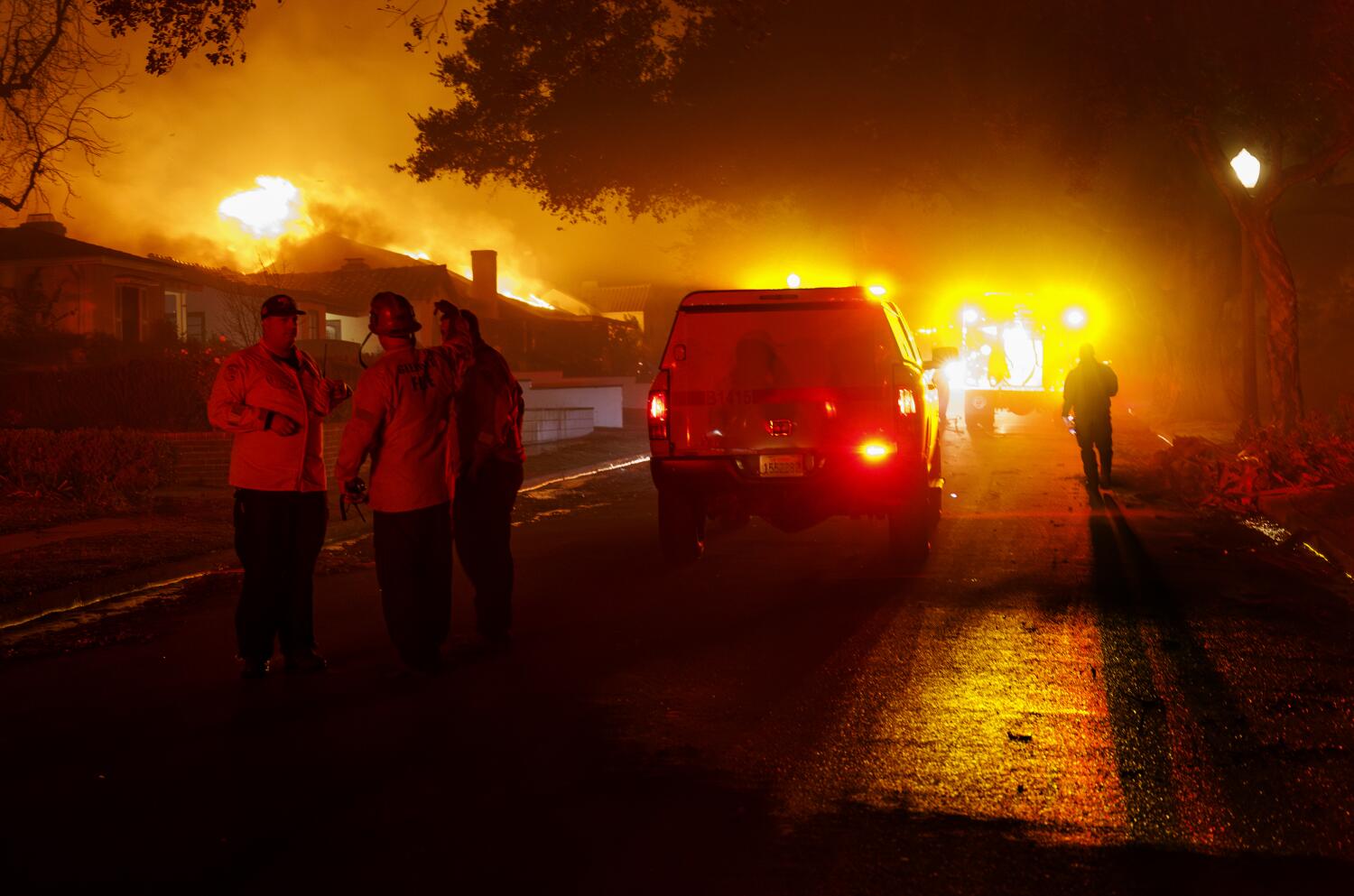-
In Delhi and New York, Hindu Right Wing Lines Up Against Mamdani - 9 mins ago
-
Red Sox Getting Dustin May A Year Removed From Life-Threatening Emergency - 17 mins ago
-
California, other states sue Trump over order threatening gender-affirming care providers - 39 mins ago
-
China Reveals Close Encounter With US in Contested Airspace - 52 mins ago
-
Trump, Term-Limited, Amasses $200 Million War Chest for Political Ambitions - 53 mins ago
-
9-year-old boy on e-scooter with brother killed by suspected drunk driver in Koreatown - about 1 hour ago
-
Map Shows States Where ICE Arrests are Highest, Lowest - about 1 hour ago
-
Trump Envoy Witkoff Visits Gaza as Aid Crisis Deepens - 2 hours ago
-
Cody Rhodes Accuses WWE Star Of Committing Locker Room ‘Crime’ - 2 hours ago
-
Kamala Harris Tells Colbert She Wants a Break From Public Office - 2 hours ago
Technology wasn’t responsible for west Altadena alert failures

The failure to send evacuation alerts to west Altadena in the early hours of the Eaton fire was not the result of a technological error, according to the company that provides L.A. County with emergency alert software.
Until the statement by Richard Danforth, head of Genasys, it was unclear whether the failure was due to software issues — or if, during a chaotic night, county officials made mistakes and bungled the alerts.
“The system was up and operational,” said Danforth in a Tuesday Zoom meeting billed as a town hall for some of the company’s worried stockholders.
The company, which provides emergency alert software to governments across the country, has found itself repeatedly in the headlines as L.A. County faces intense scrutiny over the evacuation alert failure. The county had begun using the Genasys software a month before the Eaton fire started on Jan. 7, The Times reported.
All 17 deaths from the fire occurred west of Lake Avenue, which did not get evacuation alerts until nearly 3:30 a.m. — long after the fire tore through the neighborhood, The Times previously reported. Zones to the east of Lake Avenue, on the other hand, got multiple evacuation alerts.
“Why those messages weren’t sent — we know it wasn’t technology,” Steve Sickler, Genasys’ vice president of field operations, said on the call.
Brian Alger, a senior vice president with the company, said the longest lag between when the county sent out an alert and when it hit cellphones was 14 minutes. The average was 5½ minutes, he said.
L.A. County switched from its previous emergency alert system to Genasys in fall, spending $321,000 for one year of the software, according to the county’s agreement with the company. The county moved quickly to bring the new system online, raising questions about how much time officials allotted for debugging the software and training employees on the new technology.
Sickler said he visited the county’s emergency command center the week after the fire broke out and found its system for sending the requests “very refined.”
“I know there was some speculation about … were the people trained? Were they familiar enough with the system?” he said. “They clearly had a process down.”
L.A. County officials have told reporters that decisions on when and where to send evacuation alerts are made in coordination with the county’s Office of Emergency Management, the Sheriff’s Department and the county fire department. The county has hired an outside consulting firm, the McChrystal Group, to review how evacuation alerts were handled during the wildfires.
Local members of Congress have also launched an investigation into why a faulty evacuation order meant for residents near the Kenneth fire was sent countywide Jan. 9, alarming residents already on edge who were miles away from any danger.
Danforth said Tuesday that L.A. County officials correctly used the Genasys software to draw a polygon that would alert only residents near the fire, which sparked in West Hills. But the shape they drew with the software somehow disappeared after they configured the alert, and the system defaulted to sending it out countywide.
He said that Genasys has issued a temporary fix.
“We have never been able to duplicate that error in our software. Is it our software? I don’t know,” he said. “In time, I’m sure we’ll get to it.”
Source link


















